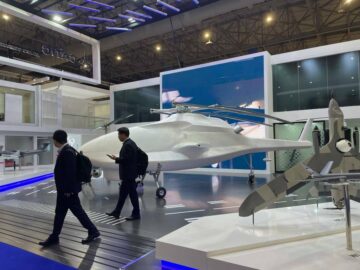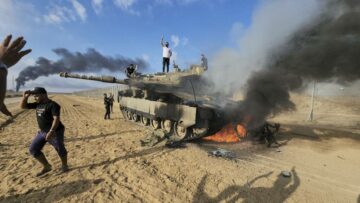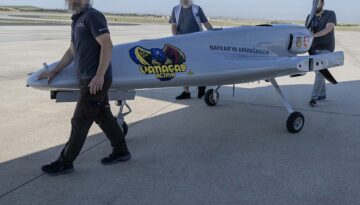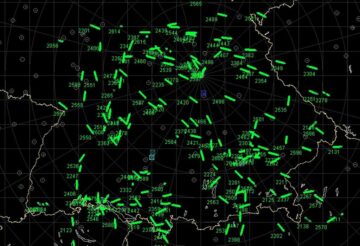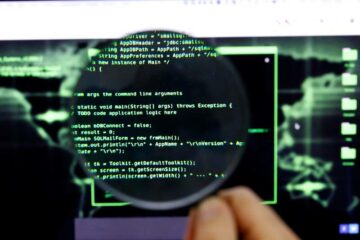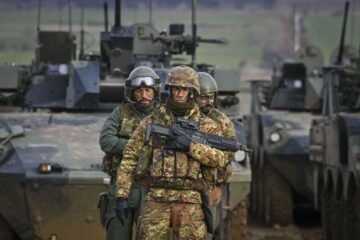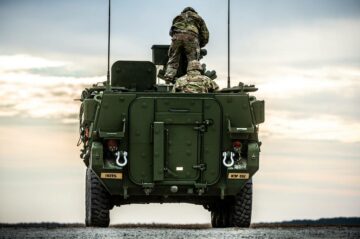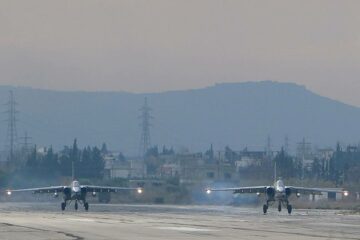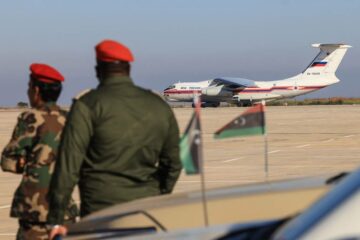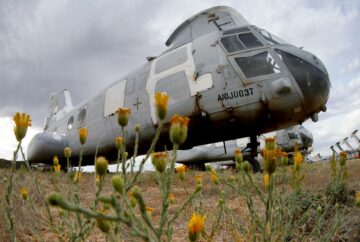MOSCOW — As Russian arms makers are fulfilling government orders at a record rate, they are bracing for a shortage in skilled labor and high-tech manufacturing components that belie the image of a defense-industrial juggernaut, according to analysts.
The projection comes amid a demographic crisis of an aging population, factors that run counter to the government’s trumpeting of expanded weapons production and construction of new plants while the war against Ukraine enters its third year.
According to the former deputy prime minister and head of Roscosmos, Yuri Borisov, the entire Russian defense industry will lack 400,000 workers in the near future.
Irina Sokolova, a specialist at a Moscow recruitment agency who asked that her employer not be revealed, said there are fewer incentives available to fill the ranks. “In 2022-23, the Russian defense industry attracted almost the entire possible personnel reserve by increasing salaries,” she told Defense News. “It is becoming more difficult to recruit specialists, unemployment in Russia is only about 3%. Defense companies are already enticing personnel from each other.”
Firms have tried to increase cooperation with universities and technical schools to prime the personnel pump, according to aerospace industry analyst Vasily Brevnov. But finding management staff adept at navigating the pressure of the Ukraine war is another story.
RELATED
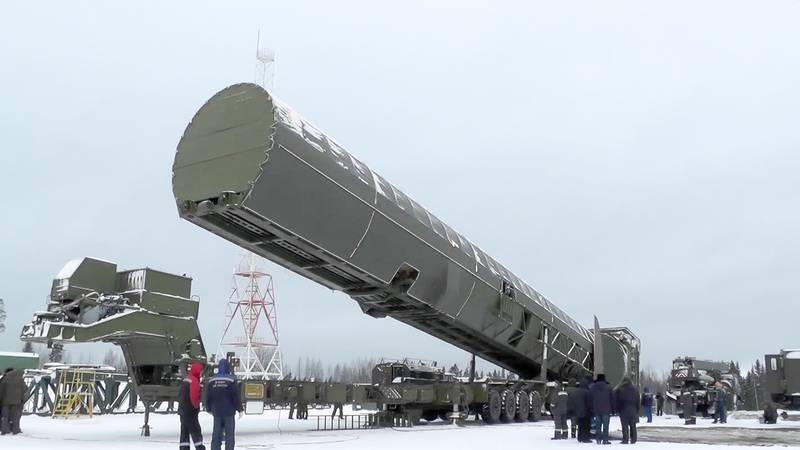
“With the beginning of a special military operation, many heads of defense industry enterprises were not ready to work in the new realities,” Brevnov told Defense News, using the government-prescribed parlance for the war. “In some cases, drastic personnel decisions were needed.”
For example, business leaders were unfamiliar with available subsidies and credit opportunities or were unable to find alternative suppliers in the wake of Western sanctions, he said.
Managers were also used to running their businesses without paying attention to the needs of their engineers, according to Sergey Smyslov, an independent defense industry analyst. In addition, according to Russian media, the courts are considering the cases of former heads of various defense companies who are accused of fraud, embezzlement and abuse of authority.
Finally, the government’s legislative and regulatory framework is slowing down many production processes, increasing time, costs and hindering technological solutions, analysts interviewed for this article said.
The sanctions squeeze has especially hit those industries in which Russia has long relied on Ukrainian products or established channels for obtaining Western components, according to Brevnov and Pavel Luzin, of the Center for European Policy Analysis think tank. Affected industries include aviation, space, shipbuilding and machine tool construction.
Scrounging for parts
While high-end radar components may now be hard to source for Russian arms makers, there is a large market of old but hardy parts that is nearly impossible to regulate, according to Michael Jerdev, a Russian aviation expert.
“If you look at the database of electronic components found in Russian weapons by Ukrainians, you can see a great conservatism in the use of electronic components in military equipment,” he said. “The mass of electronic component samples is literally 25 years old, massive and saturated in the secondary market, which is almost impossible to control with sanctions,” said Jerdev.
Crucial equipment has continued to make its way to Russia since the beginning of the war – or has been there all along. Kirill Sypalo, general director of the Central Aerohydrodynamic Institute, said in November 2022 that imported machine tools made up the vast majority of equipment in his organization, with producers hailing from Germany, Sweden, Israel.
In total, foreign manufacturers accounted for up to 50% of the electronic components used in rocket and space technology systems and up to 70% in satellite production, an engineer at the state-owned enterprise Russian Space Systems told Defense News, speaking on condition of anonymity to discuss internal planning assumptions.
“New sanctions in electronics lead to the suspension or significant postponement of the launch dates of various spacecraft,” said Vitaly Egorov, an independent expert on the Russian space industry. “Roscosmos itself or the Russian industry is not able to create a full-fledged replacement, and all the hopes of Russian cosmonautics are connected either with China or with parallel imports, that is, essentially gray schemes to circumvent sanctions, but this leads to significant losses of time and money.”
Heavily dependent on foreign parts, Russian naval shipbuilders are now looking to source components from manufacturers in China, India, or Iran through shadow import schemes, a leading researcher at the state-owned enterprise Kant, who asked that their name not be revealed, told Defense News.
Alexey Migalin, CEO of marine equipment seller NavMarin, said in an interview with Kommersant newspaper that radars, satellite-based navigation receivers and related devices are manufactured in Russia but based on Chinese technology.
China to the rescue?
At the Neva 2023 International Exhibition and Conference in St. Petersburg, the head of the Russian Maritime Register of Shipping (RMRS), Petr Vanyukov, said that 60 of his employees are embedded all over China to scout equipment that officials hope could replace the entire ecosystem of sanctioned, Western technology.
In September 2023, at a meeting of the Council of the Russian Chamber of Commerce and Industry, Konstantin Babkin, president of the Rosspetsmash Association, said there is practically no production of hydraulics components, needed for making tanks, in Russia. Similarly, local makers of bearings and electronic parts can only produce up to 25% of the required volume, he added.
At the same time, it is not profitable to produce those parts in Russia, Babkin said, adding that the tax burden in China is lower and loans are cheaper.
That explains why many experts interviewed for this article said that scheme of import substitution is still weak. The head of Rostec, Sergey Chemezov, stated in a June 2022 article for RBC that “replacing everything is pointless, economically inexpedient and simply impossible.”
In a study by the Russian Higher School of Economics, more than 60% of executives polled said they are confident that within two to three years they will only partially be able to forego using foreign equipment, technologies and raw materials.
Machine tools play a crucial role in the production of numerous types of weapons and military equipment. Even before Russia’s invasion in 2022, the country’s machine tool industry had been in crisis for a long time.
Last year, the government approved a program to provide loans to machine tool builders at an interest rate of 1% per year. The government plans to inject 300 billion rubles ($3.2 billion) into the industry by 2030. Rostec aims to reduce the import of machine tools by half.
In an effort to obtain foreign components and technologies, Russian metalworking company Stankomashstroy plans to open a machine tool factory in China.
But Asian-made machines are considered to be of lesser quality. Mikhail Prokopyev, an expert on robotics at SofPol, speaking at the Russian Industrial Week event held in Moscow in October, said that Chinese equipment is usually less durable and less precise than Japanese and European equipment.
Parallel imports and smuggling are also used by Russia. According to Russian independent investigative journalists from The Insider, there are examples when a private foreign company purchased microchips from Analog Devices or Texas Instruments, both U.S. companies, and resold them to a Russian private importing company.
Russian officials are hedging against the semiconductor flow drying off completely. Analysts have observed large-scale import activity of equipment from China, amounting to a future repository that could serve production needs for one to two years, said Luzin, the CEPA analyst.
All told, the Russian defense industry, while firing on all cylinders, is behind the technology curve as Chinese substitutions turn out to be lackluster. As a result, it is easier for Russian industry to reproduce old Soviet models of equipment, rather than create technically more complex Armata tanks and Su-57 aircraft, Luzin explained.
Maxim Starchak is a Russia correspondent for Defense News. He previously worked as an editor for the Russian Defence Ministry and as an expert for the NATO Information Office in Moscow. He has covered Russian nuclear and defense issues for the Atlantic Council, the Center for European Policy Analysis, the Royal United Services Institute and more.
- SEO Powered Content & PR Distribution. Get Amplified Today.
- PlatoData.Network Vertical Generative Ai. Empower Yourself. Access Here.
- PlatoAiStream. Web3 Intelligence. Knowledge Amplified. Access Here.
- PlatoESG. Carbon, CleanTech, Energy, Environment, Solar, Waste Management. Access Here.
- PlatoHealth. Biotech and Clinical Trials Intelligence. Access Here.
- Source: https://www.defensenews.com/global/europe/2024/02/22/russias-maxed-out-arms-makers-face-labor-tech-shortages/
- :has
- :is
- :not
- $3
- $UP
- 000
- 1
- 11
- 2%
- 2022
- 2023
- 2030
- 25
- 300
- 400
- 60
- 70
- 800
- a
- Able
- About
- abuse
- According
- accounted
- accused
- activity
- added
- adding
- addition
- adept
- Aerospace
- affected
- against
- agency
- Aging
- aims
- aircraft
- All
- almost
- along
- already
- also
- alternative
- Amid
- an
- analog
- analysis
- analyst
- Analysts
- and
- Anonymity
- Another
- approved
- ARE
- arms
- article
- AS
- asked
- Association
- assumptions
- At
- attention
- attracted
- authority
- available
- aviation
- based
- BE
- becoming
- been
- before
- Beginning
- behind
- Billion
- both
- builders
- burden
- business
- Business Leaders
- businesses
- but
- by
- CAN
- cases
- Center
- central
- ceo
- Chamber
- channels
- cheaper
- China
- chinese
- circumvent
- comes
- Commerce
- Companies
- company
- completely
- complex
- component
- components
- condition
- Conference
- confident
- connected
- considered
- considering
- construction
- continued
- control
- cooperation
- Costs
- could
- Council
- Counter
- country’s
- Courts
- covered
- create
- credit
- crisis
- crucial
- curve
- Database
- Dates
- decisions
- defence
- Defense
- demographic
- dependent
- deputy
- Devices
- difficult
- Director
- discuss
- down
- each
- easier
- economically
- Economics
- ecosystem
- editor
- effort
- either
- Electronic
- Electronics
- embedded
- employees
- engineer
- Engineers
- Enterprise
- enterprises
- Enters
- enticing
- Entire
- equipment
- especially
- essentially
- established
- European
- Even
- Event
- everything
- example
- examples
- executives
- exhibition
- expanded
- expert
- experts
- explained
- Explains
- Face
- factors
- factory
- false
- fewer
- fill
- Find
- finding
- firing
- flow
- For
- foreign
- Former
- found
- Framework
- fraud
- from
- fulfilling
- full-fledged
- future
- General
- Germany
- Government
- gray
- great
- had
- hailing
- Half
- Hard
- Have
- he
- head
- heads
- hedging
- Held
- her
- High-End
- higher
- his
- Hit
- hope
- hopes
- http
- HTTPS
- image
- images
- import
- importing
- imports
- impossible
- in
- Incentives
- include
- Increase
- increasing
- independent
- india
- industrial
- industries
- industry
- information
- inject
- Insider
- Institute
- instruments
- interest
- INTEREST RATE
- internal
- International
- Interview
- interviewed
- into
- invasion
- investigative
- Iran
- Israel
- issues
- IT
- ITS
- itself
- Japanese
- Journalists
- jpg
- june
- Kommersant
- labor
- Lack
- Lackluster
- large
- large-scale
- launch
- lead
- leaders
- leading
- Leads
- Legislative
- less
- lesser
- literally
- Loans
- local
- Long
- long time
- Look
- looking
- losses
- lower
- machine
- Machines
- made
- Majority
- make
- Makers
- Making
- management
- manufactured
- Manufacturers
- manufacturing
- many
- Marine
- Maritime
- Market
- Mass
- massive
- materials
- May..
- Media
- meeting
- Michael
- mikhail
- Military
- minister
- ministry
- models
- money
- more
- Moscow
- name
- navigating
- Navigation
- Near
- nearly
- needed
- needs
- New
- news
- no
- November
- now
- nuclear
- numerous
- observed
- obtain
- obtaining
- october
- of
- off
- Office
- officials
- Old
- on
- ONE
- only
- open
- operation
- opportunities
- or
- orders
- organization
- Other
- out
- over
- Parallel
- parts
- paying
- per
- Personnel
- PETERSBURG
- planning
- plans
- plants
- plato
- Plato Data Intelligence
- PlatoData
- Play
- policy
- population
- possible
- practically
- precise
- president
- pressure
- previously
- Prime
- prime minister
- private
- processes
- produce
- Producers
- Production
- Products
- profitable
- Program
- Projection
- provide
- pump
- purchased
- quality
- radar
- ranks
- Rate
- rather
- Raw
- rbc
- ready
- realities
- record
- recruit
- recruitment
- reduce
- register
- Regulate
- regulatory
- related
- replace
- replacement
- repository
- required
- rescue
- researcher
- Reserve
- result
- Revealed
- robotics
- rocket
- Role
- royal
- rubles
- Run
- running
- Russia
- russian
- s
- Said
- salaries
- same
- Sanctioned
- Sanctions
- satellite
- scheme
- schemes
- School
- Schools
- Scout
- Screen
- secondary
- Secondary Market
- see
- semiconductor
- September
- serve
- Services
- Shadow
- she
- Shipping
- shortage
- shortages
- significant
- Similarly
- simply
- since
- skilled
- Slowing
- Solutions
- some
- Source
- soviet
- Space
- space industry
- spacecraft
- speaking
- special
- specialist
- specialists
- Squeeze
- st
- St. Petersburg
- Staff
- state-owned
- stated
- Still
- Story
- Study
- suppliers
- suspension
- Sweden
- Systems
- tank
- Tanks
- tax
- tech
- Technical
- technically
- technological
- Technologies
- Technology
- texas
- than
- that
- The
- their
- Them
- There.
- they
- Think
- think tank
- Third
- this
- those
- three
- Through
- time
- to
- told
- tool
- tools
- Total
- tried
- TURN
- two
- types
- u.s.
- Ukraine
- ukraine war
- Ukrainian
- Ukrainians
- unable
- unemployment
- unfamiliar
- United
- Universities
- use
- used
- using
- usually
- various
- Vast
- volume
- Wake
- war
- Way..
- Weapons
- week
- were
- Western
- when
- which
- while
- WHO
- why
- will
- with
- within
- without
- Work
- worked
- workers
- year
- years
- you
- zephyrnet

